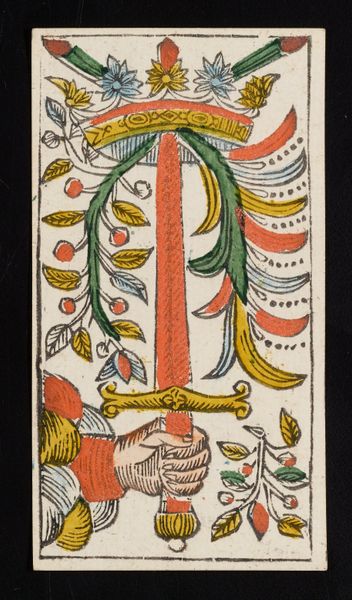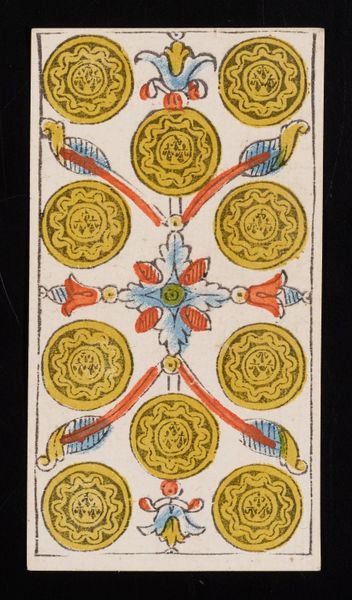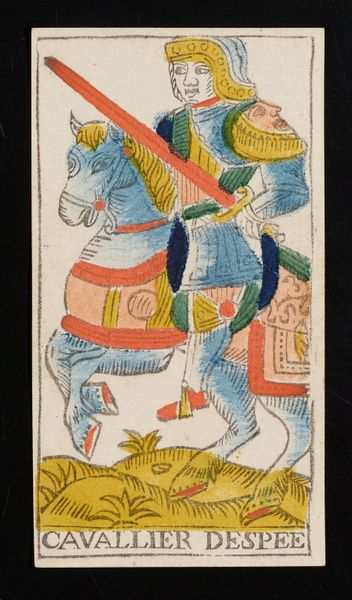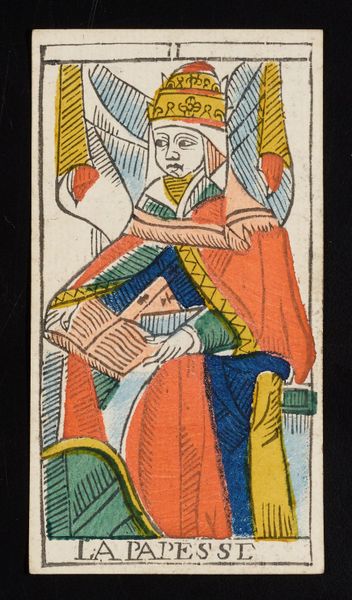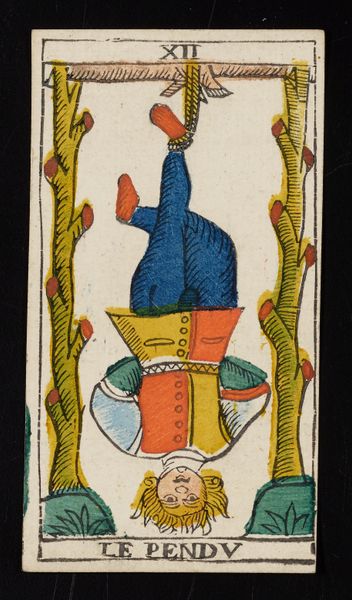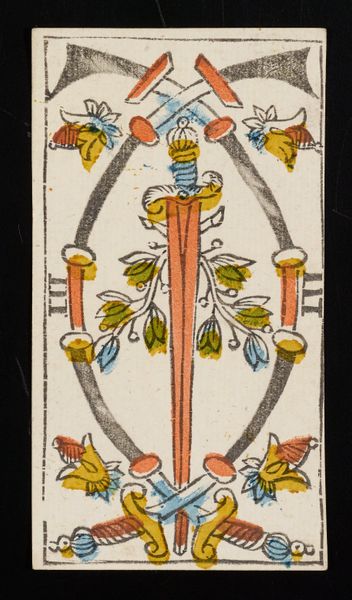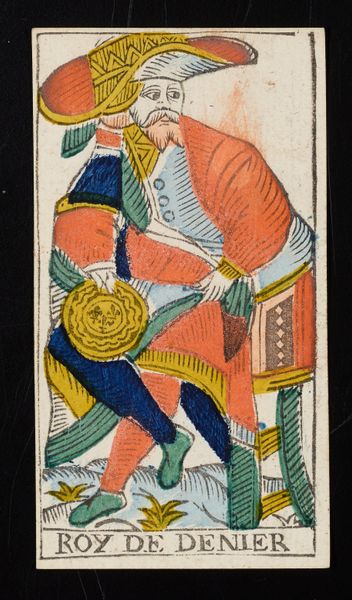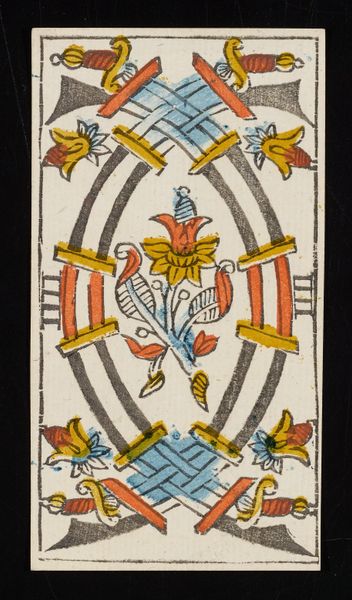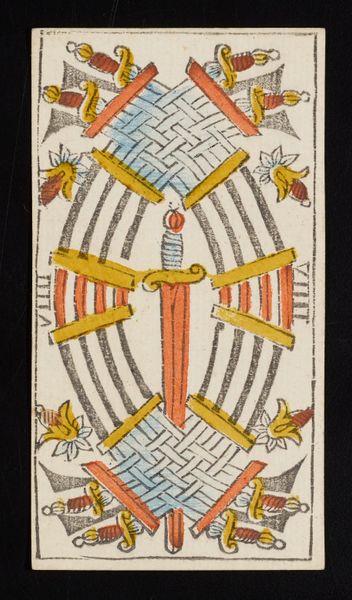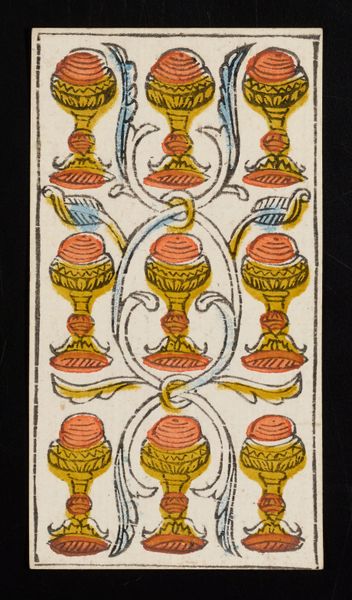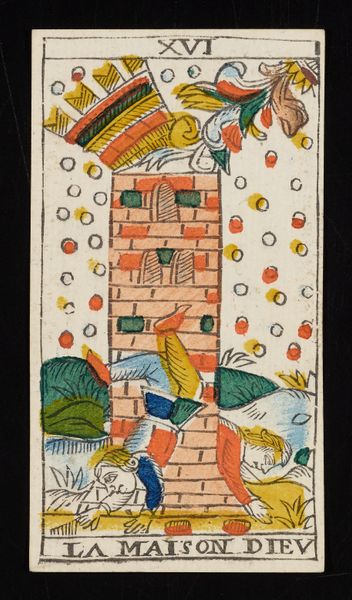
print, woodcut
#
allegory
#
baroque
# print
#
ukiyo-e
#
figuration
#
woodcut
#
history-painting
Dimensions: 4 7/16 x 2 7/16 in. (11.27 x 6.19 cm) (image, sheet)4 5/8 x 2 1/2 in. (11.75 x 6.35 cm) (sheet, each)
Copyright: Public Domain
Claude Burdel made this ‘Wheel of Fortune’ card in Switzerland sometime in the 1700s, using woodblock printing and hand-applied color. The process begins with carving the design in reverse on a block of wood. Ink is then applied to the raised surface, and the image is transferred to paper, resulting in multiples. The texture of the wood adds a tactile dimension to the print, and the hand coloring gives it a unique, slightly irregular appearance. These were not precious materials and were intended as tools for entertainment and divination, made for a mass market. The rough production mirrors the subject. The wheel represents life’s ups and downs, suggesting that fate—like the printing process itself—can be repetitive and impactful. Considering the social context of the 18th century, the card’s mass production reflects a growing consumer culture. While not ‘fine art’ in the traditional sense, the card’s craftsmanship and cultural significance demonstrates the artistry embedded in everyday objects.
Comments
No comments
Be the first to comment and join the conversation on the ultimate creative platform.
